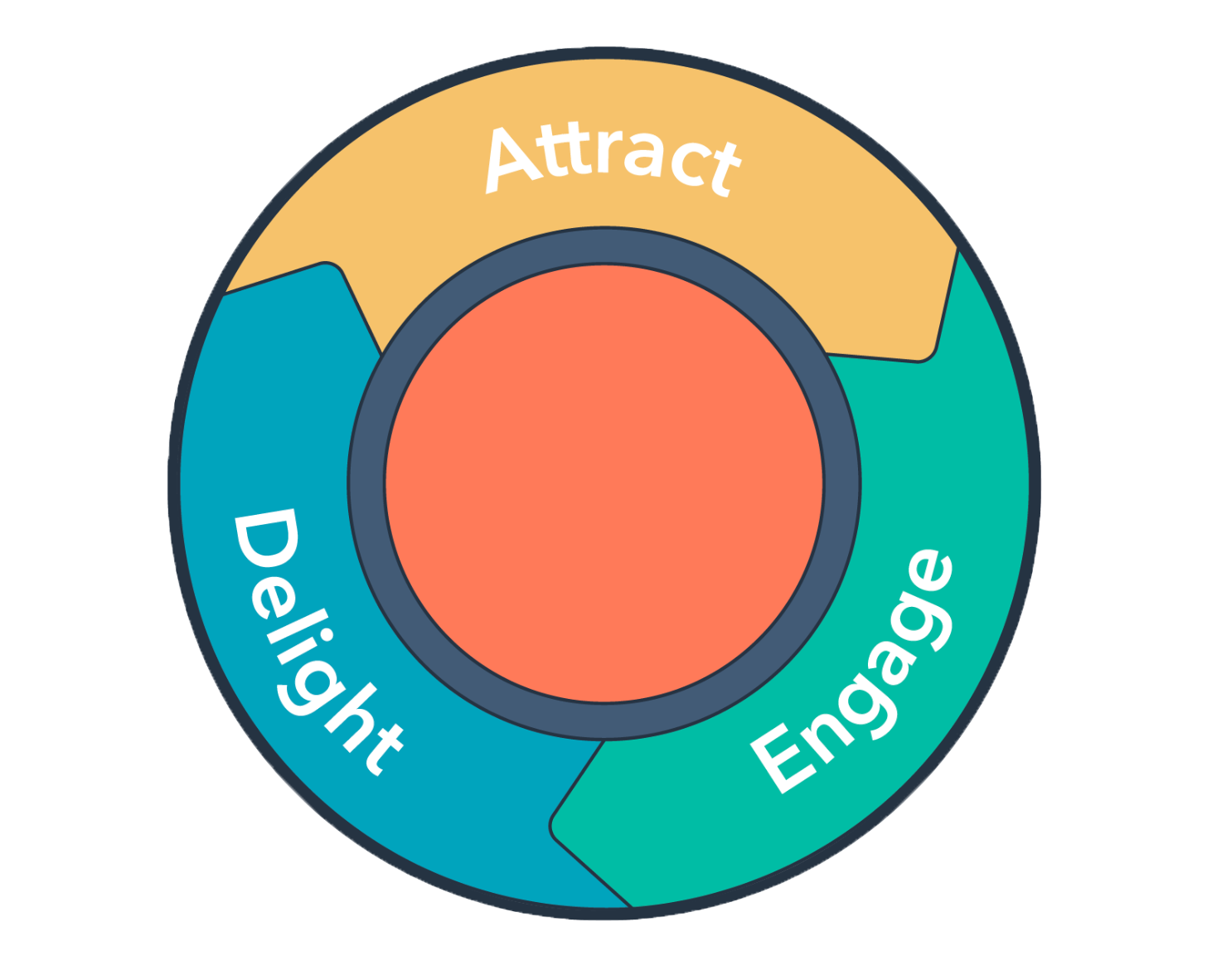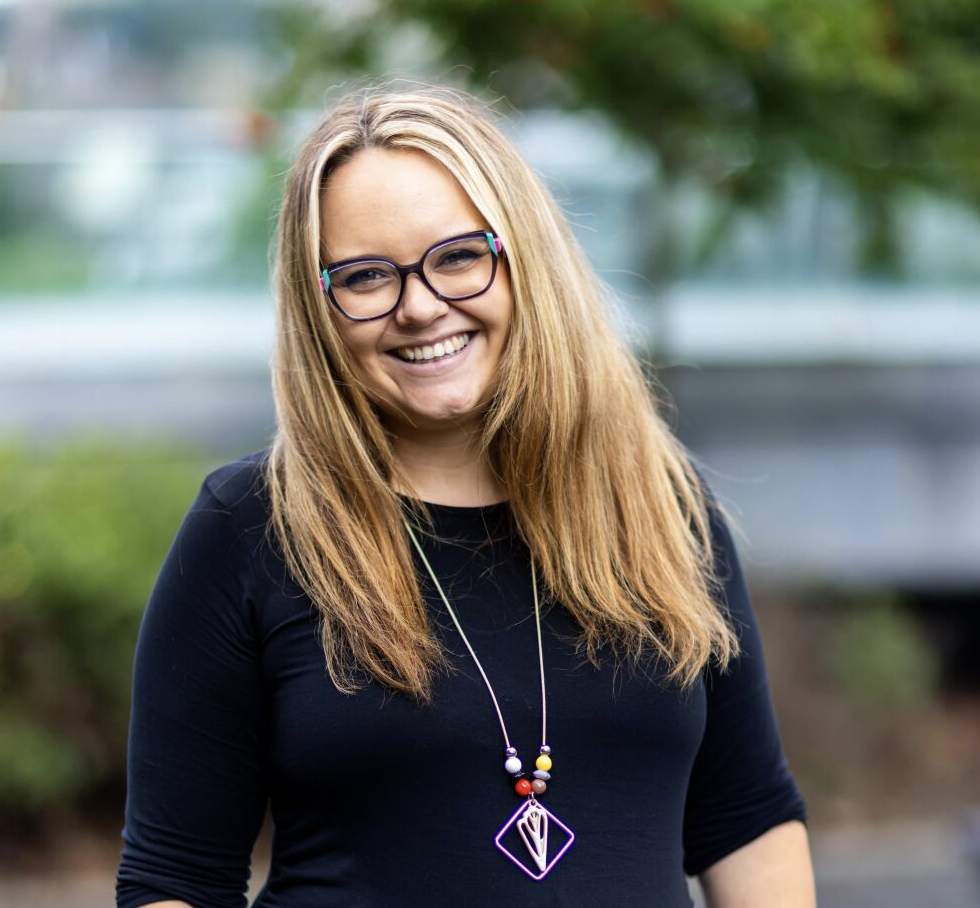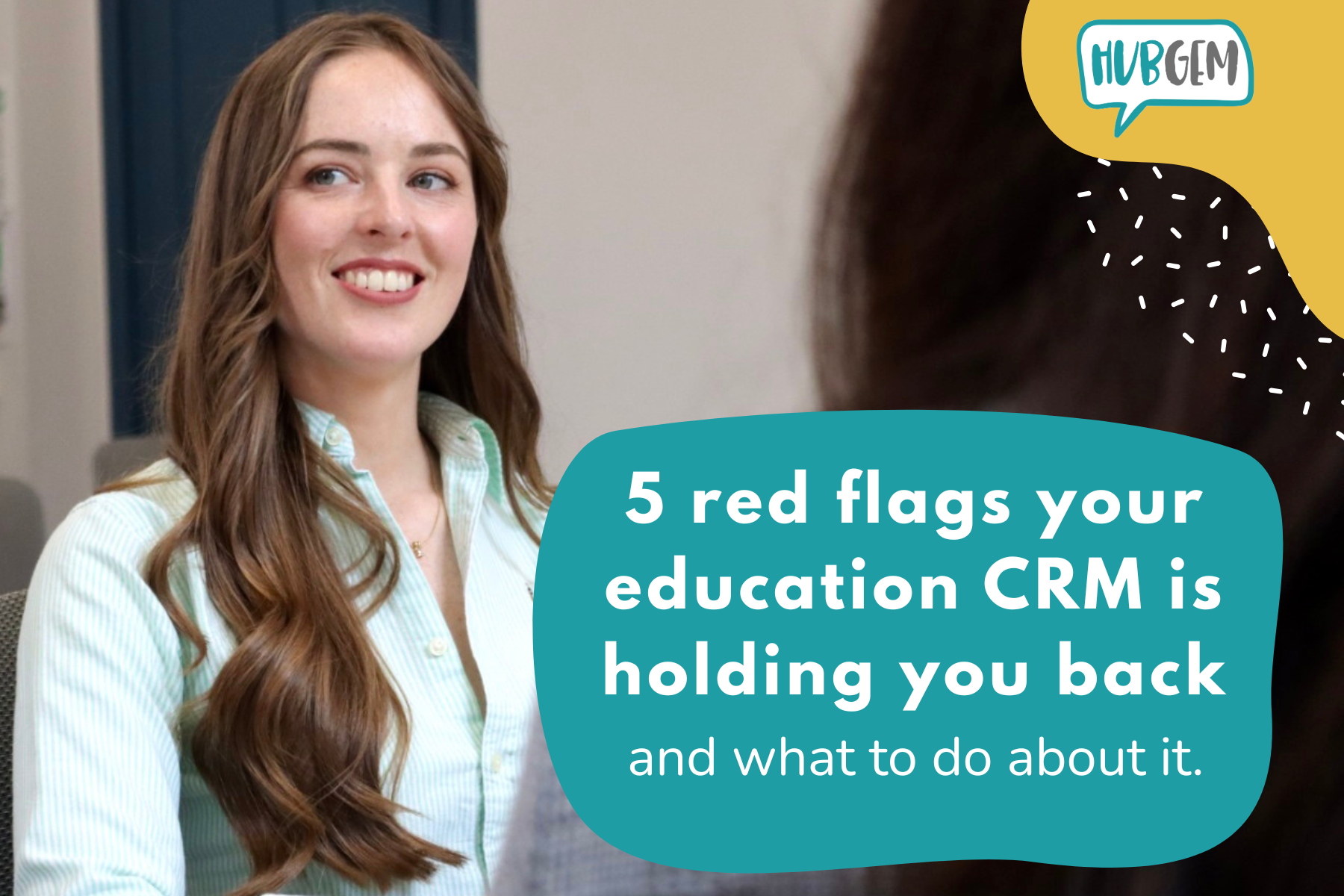It's time to put your students first.
Inbound marketing is all about helping your customers - providing what they need, when they need it.
Interruptive 'outbound' marketing and sales methods are outdated. Education providers that want to convert more students should step away from pushy, impersonal marketing messages and look towards the inbound methodology to see their growth goals become a reality.
Inbound marketing is about attracting students (and their parents) by creating valuable content and experiences tailored to them. It's about solving problems for your customers and personalising their experience with your school, college or university at every step of their journey with you.
The ultimate purpose of inbound marketing is to attract new prospects, engage them with insightful content and delight them by delivering expert advice, products and services; all without annoying or interrupting them with traditional marketing methods.

Implementing an Inbound Marketing Strategy
An inbound marketing strategy can include a number of different channels and types of content to attract prospects and customers to your website. But inbound marketing is just one part of a larger movement in the education - and indeed business - world.
It's the foundation for the idea that it's not enough to just attract people to your website; you have to continue to help, support, and empower them well after they become a customer. That's how your school, college or university grows.
Inbound marketing aims to keep Marketing, Admissions, and Service constantly focused on how to help current and future students.

HubSpot refer to this as the 'flywheel', and the philosophies of inbound permeate and accelerate that flywheel - from Attract (marketing), to Engage (admissions), to Delight (offering an exceptional service) - to help you grow faster, and grow better. In the above image, you can see some of the tools you can use at each stage of the customer journey. We will go into more detail for each stage below, showing you the steps your school, college or university need to take to successfully implement an inbound marketing strategy to grow your student numbers:
Your starting point: Developing your buyer personas
Buyer personas are the foundation for any inbound marketing campaign. These semi-fictional representations are a great way for you to get yourself firmly in the mindset of your target market. Identify who your perfect student would be and who the key decision makers are in the journey (from their initial enquiry through to enrolment). Use this insight to ensure that your marketing campaigns are tailored for - and targeted at - the right people.
Find out more: The role of personas in education and non-profit marketing
HubSpot have a handy persona development tool that makes a great starting point, complete a copy for each person involved in your student journey (from the student themselves, to their parents and any other key decision makers). Consider what their lives are like and what motivates them. This will help you to tailor your marketing content to answer their questions.
Step 1:
Attract - get the attention of your target audience
Attracting your target students and their families through inbound methods means looking at your buyer personas and how they are tied to content creation and development.
You don’t want just anyone coming to your website. You want people who are most likely to become leads and, ultimately, happy students! How do you get them there? You attract more of the right people, with relevant content, at the right time.
Find out more: Converting visitors to enrolments: How to use your website effectively
To reach your audience, start by creating and publishing content — such as blog articles, content offers, and social media — that provide value. That way your marketing becomes relevant and helpful to your audience. Not interruptive.
A few examples of content that you could provide:
- A guide on how to choose the right university
- A blog post to help parents with subject option choices for their child
- Social media posts about student success stories at your college
- A guide to your university's city with content from current students
- An infographic to showcase the variety of courses you offer at your college
- A blog article written by industry experts who recommend your university course
- Social media posts about the next stage of the admissions process

To attract your audience members on a deeper level through inbound marketing, optimise all of this content with an SEO strategy. An SEO strategy will require you to target specific keywords and phrases related to your products or services, the challenges you solve for customers, and the ways you help target audience members.
Find out more: SEO: Making the most of your school website
This will allow your content and information to organically appear on search engine results pages for the people who are searching for this information — also known as your target audience or the right customers for your business.
Step 2:
Engage - effective communication = long term relationships
When using inbound strategies to engage your audience, ensure you’re communicating and dealing with enquiries, and current students/families, in a way that makes them want to build long-term relationships with you. When using these engagement strategies, inject information about the value your school, college or university will provide them with.
Your conversation needs to be tailored, personalised and ultimately needs to reassure your prospective students that your education offering is right for them. Take a look at your current 'customer journey', how does your conversation from initial enquiry through to enrolment look? Do all of your staff give the same message about your offering?
Find out more: From top to bottom - providing value at each stage of your admissions funnel
Who does your prospect engage with during their journey to becoming a student with you? Often we hear that the following people are involved:
- Marketing and events team
- Registrar/admissions team
- Senior leadership team
- Heads of Department/School (academic)
- Heads of House/Year/Student Services (pastoral)
- Receptionists/administrators
- Boarding/accommodation team
- SENCo/Support team
By looking in detail at the customer journey, you can ensure that everyone in your team has the same goal for each conversation: offering the best possible service and being as helpful as possible to your prospective student/family.
Specific engagement strategies may include how you handle and manage your incoming admissions calls and how you manage your open day events. Focus on how customer service representatives handle calls from interested people and prospects. Additionally, be sure you’re always offering solutions to meet the needs of your customers at each conversation, rather than just talking about who you are and what you offer.
Find out more: 7 ways that live chat boosts your customer experience
The engage stage is where you will capture your prospective student's contact details and interests, so you should be considering your website forms, contact database/CRM functionality, call-to-action buttons and smart content to personalise your communications.
Find out more: Lead capture: Converting your website visitors
By engaging effectively with your prospective students and families, you will ensure that your relationship is mutually beneficial and has the needs of the prospective student driving your conversations.
Step 3:
Delight - keeping your students happy, satisfied and supported
Delighting inbound strategies ensure customers are content with the service you are providing long after they make a commitment with you. These strategies involve your team members becoming advisors and experts who assist at any point in time.
By using thoughtful, well-timed chatbots and surveys to assist, support, and request feedback from your current students/families is a great way to delight. Bots and surveys should be shared at specific points in time throughout the customer’s journey to ensure they make sense and are of value.
Find out more: Automation to streamline your marketing and admissions
For example, a satisfaction survey may be sent out following an open day, or perhaps after your student has completed their first term of studying with you. Surveys are a great way to get their feedback, review ideas for improvement and let them know that you value their thoughts.
Blog, website and social media content also has a big part to play in delighting current students and their families in education. Use your platforms as a way to share student success stories, capture video footage of exciting events, share student work and engage in meaningful conversations.
Find out more: Create content that converts: teachers and marketers working together
Resource: Free Content Planner
Social media followers may use one of your profiles to provide feedback, ask questions, or share their experience with your products or services. Respond to these interactions with information that helps, supports, and encourages followers — this shows you hear and care about them.
Lastly, the mark of an inbound strategy focused on delighting customers is one that assists and supports customers in any situation, whether or not your school, college or university gets any value out of it. Remember that a delighted customer becomes a brand advocate and promoter, so handle all interactions, both big and small, with care.
Find out more: The importance of reviews: Delighting your customers
So, what next?
There you have it - inbound marketing for each stage of your customer journey. And whilst it may seem like a lot to take in, if you stay focused on meeting the needs of your customers in everything that you do then you won't go far wrong!
We know that education marketing and admissions departments are busy places and we are here to help. Here are a few services we can offer to help you implement an inbound marketing strategy:
- Free consultation - arrange a meeting and let's talk about what your growth goals look like. If we think we can help, we can set up a further free Exploratory Call to delve a little deeper.
Book now - Consultancy - as many days as you require, in person or remote. We can look in-depth at what you are currently doing, how it could be improved and which tools would help you the most.
Find out more about our consultancy services. - HubSpot onboarding - if you have your mind made up about HubSpot, get in touch before you get started and we can help you make it work for your student recruitment goals. As a Gold tiered HubSpot Solutions Partner, we can provide your education-specific onboarding (required at point of purchase) and support.
Find out more about Hubspot for education.
Find out more about HubSpot Onboarding - Ongoing support and content creation - we can tailor our services to meet your needs. Whether you need some content writing, automation building or a guaranteed helping hand as you make the transition to effective digital marketing, our education marketing experts are here to help.
Find out more about our content services and monthly support packages.
.png?width=150&height=101&name=HUBGEM%20Logo%20-%20smaller%20logo%20(1000%20x%20673).png)


.png)

%20-%20AEO.png)

%20-%20BreezeContent%20agentstudio.png)